Dr. Cook Artifacts 5: The Kawin Postcard Series
Written on March 8, 2022
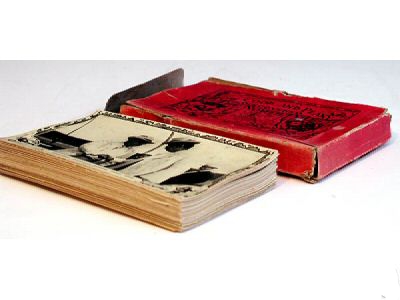
In 1909, the rival claims of Cook and Peary to have reached the North Pole produced scores of individual postcards, many pairs of related designs and several series. By far the largest was that issued by Kawin & Co., mostly known for its stereopticon views, based in Chicago. It issued a series of 50 cards entitled How Cook and Peary Discovered the North Pole, divided equally between the two explorers. About half the cards were either photographs or drawings based on photographs. The rest were drawings, some of them total fantasies, that purported to show scenes from the expeditions. The cards have a different frame for the vertical and horizontal designs.
They came in a red cardboard box with one of the card’s images reproduced on the cover.

This picture shows 46 of the cards along with the box’s top and bottom. It doesn’t show the cards numbered 22, 23 or 24, and leaves out card 33, erroneously reproducing 28 twice.

The cards have a common reverse with a short text elaborating on the card’s image.
Illustrations of each card in the set follow, along with some comments concerning the individual cards.

1-3
Card 2 is the only card with a unique frame design.

4-6
Card 5 has Capt. Bartlett marked with and “x.” In the front row from the left are Ross Marvin, Peary’s private secretary, murdered on the expedition by an Inuit, Dr. John Goodsell, the expedition’s surgeon, Donald B. Macmillan, and George Borup, assistants to Peary.

7-9
Card 9 shows Josephine Diebitsch Peary, Robert E. Peary, Jr. and Marie Ahnighito Peary. Although Peary’s son was called “Jr.”, they actually had different middle names. Peary’s was Edwin, his son’s was Emile, named after Josephine Peary’s brother, Emile Diebitsch.

10-12

13-15
Card 13 shows the catch-as-catch-can accuracy of many cards in the set. This view, because of the in-line hitching of the dog team, the dress of the figures, and the presence of a river steam boat in the background, indicates that it was taken probably in Alaska.
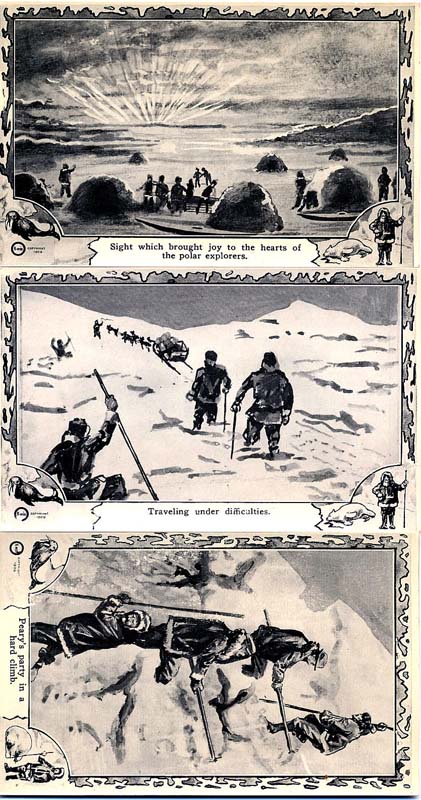
16-18
The first two cards are examples of many fantasy scenes in the set based on no known photograph.
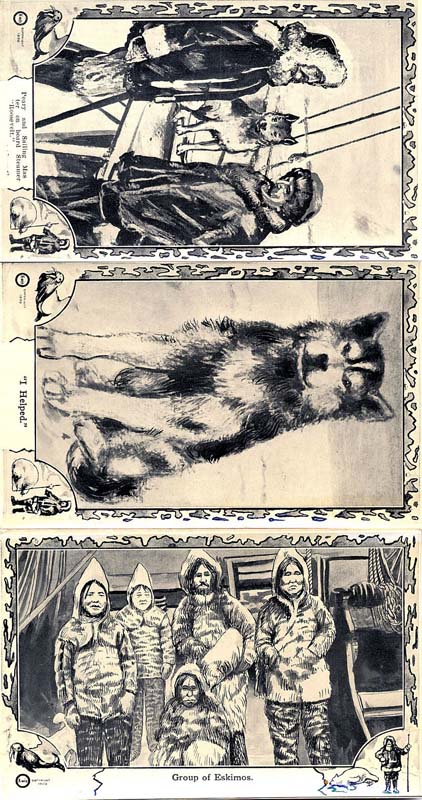
19-21

22
This scene is probably based on a photograph taken in Danish Greenland. Notice the house.

23
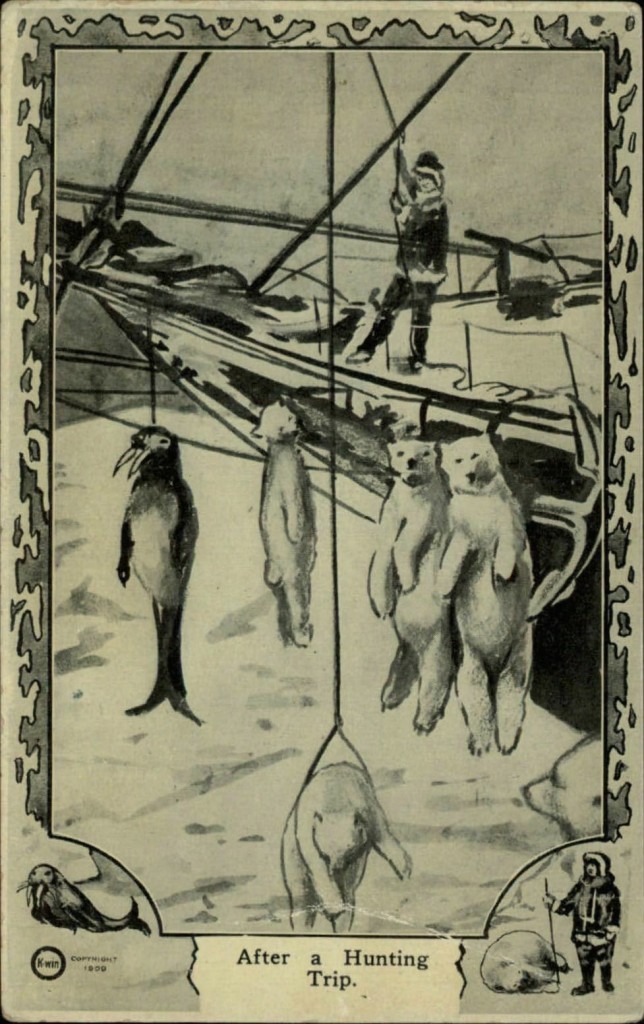
24
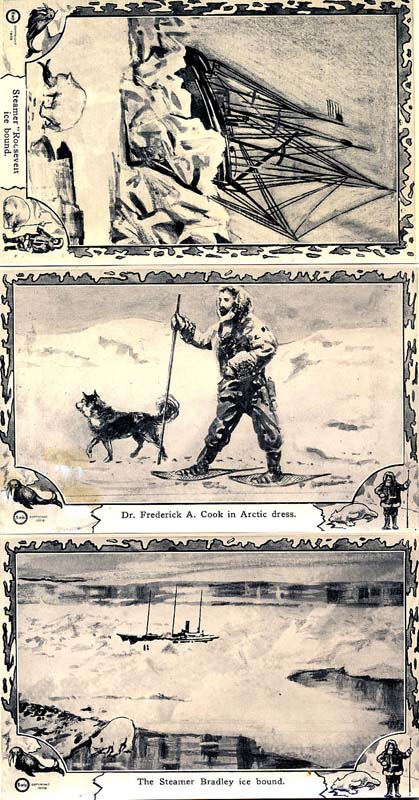
25-27
Card 26 is based on a photograph of Dr. Cook made after he returned from his service on the Belgian Antarctic Expedition in 1899. Card 27 does not show the Bradley, but rather the Roosevelt. The Bradley was never “ice bound” at any time on Cook’s expedition. The view is a reworking of the view used on Card 12.
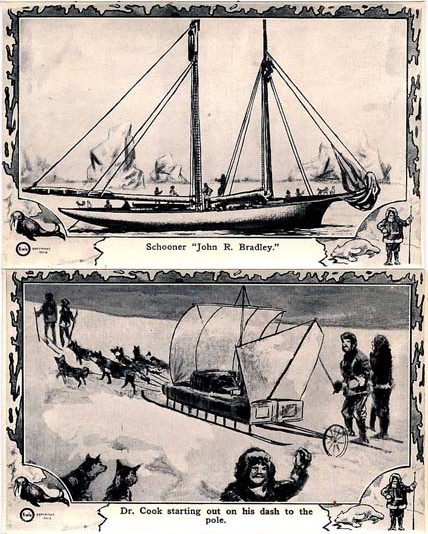
28-29
Cook did not use sails on his way to the Pole, or carry an odometer to measure distance.
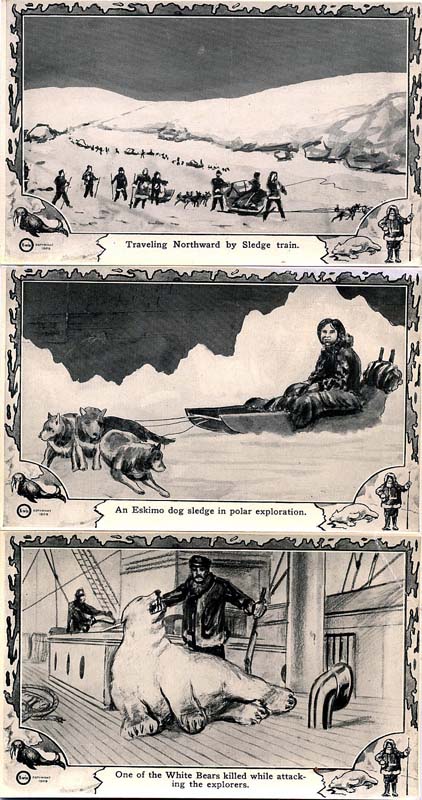
30-32
Card 32 is based loosely on a photo of John R. Bradley with a polar bear trophy.

33
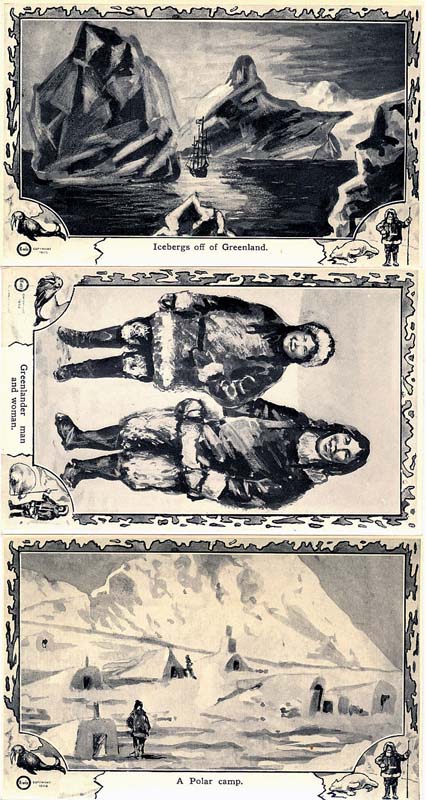
34-36
Card 36, another fantasy, shows permanent Inuit dwellings in Greenland rather than a “polar camp.”
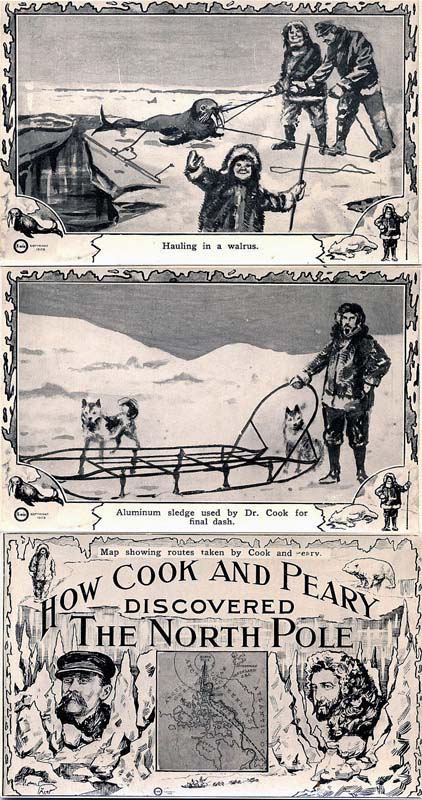
37-39
Card 38 is also a fantasy. Cook had no “aluminum sledge” on his expedition. All of his sleds were made of hickory after a design of his brother, Theodore.
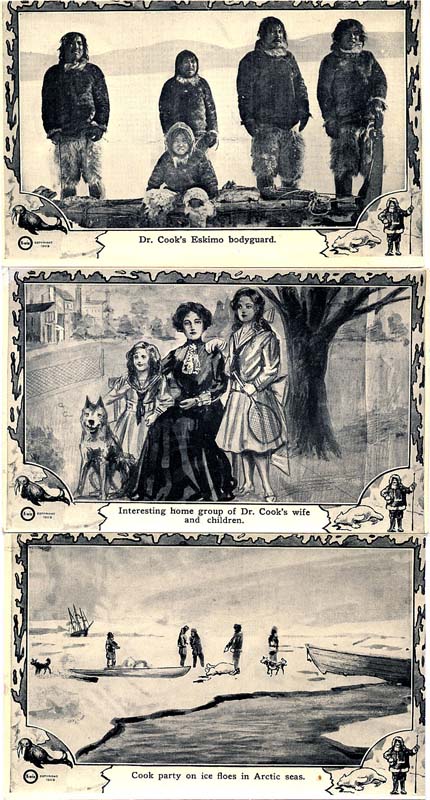
40-42
Card 42 shows Helen Cook, Dr. Cook’s natural daughter, Marie Fidel Cook and Ruth Cook, Marie’s daughter by a previous marriage.
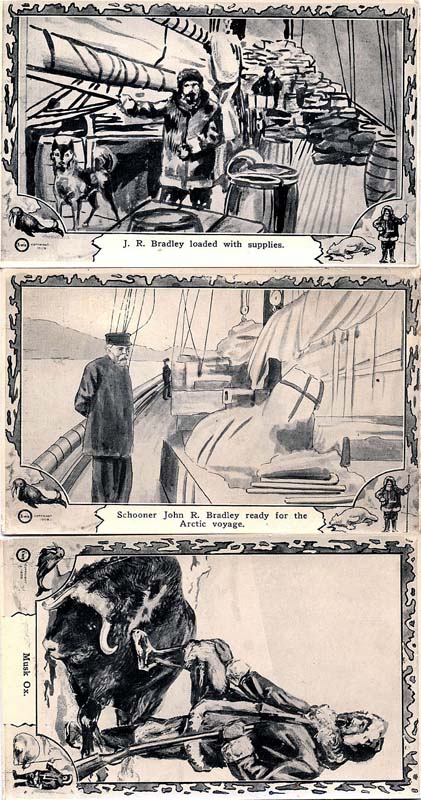
43-45
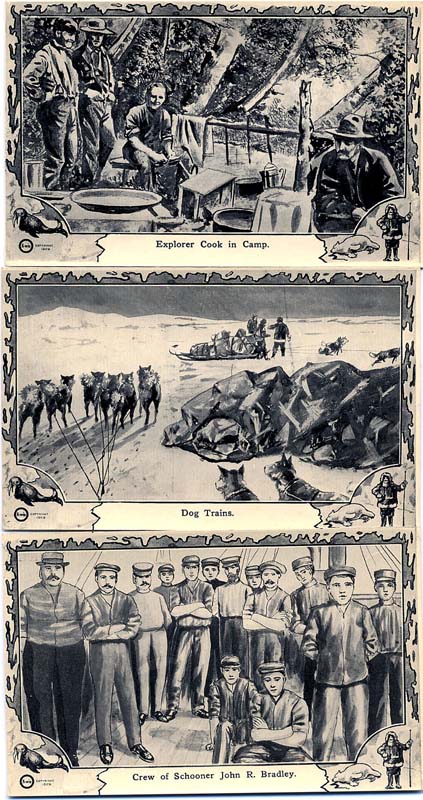
46-48
Card 46 is based on a photo taken on Cook’s 1903 expedition to Alaska. Card 48 is a fantasy. The Bradley was a small schooner that did not require so large a crew.

49-50
Card 49 is based on an illustration that appeared on the cover of the French magazine Le petit Journal.
Filed in: Uncategorized.